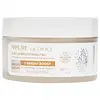What's inside
What's inside
 Key Ingredients
Key Ingredients

 Benefits
Benefits

 Concerns
Concerns

 Ingredients Side-by-side
Ingredients Side-by-side

Water
Skin ConditioningGlycerin
HumectantGlycolic Acid
BufferingButylene Glycol
HumectantPropylene Glycol
HumectantGluconolactone
Skin ConditioningMelaleuca Alternifolia Leaf Extract
PerfumingHamamelis Virginiana Leaf Extract
Skin ConditioningNiacinamide
SmoothingChamomilla Recutita Flower Extract
MaskingRubus Idaeus Fruit Extract
AstringentCitrus Limon Fruit Extract
MaskingSalicylic Acid
MaskingAcer Saccharum Extract
Skin ConditioningPortulaca Oleracea Extract
Skin ConditioningAloe Barbadensis Leaf Juice
Skin ConditioningAmylopectin
Dextrin
AbsorbentXanthan Gum
EmulsifyingTetrasodium EDTA
Sodium Hydroxymethylglycinate
PreservativePolyglutamic Acid
Skin ConditioningWater, Glycerin, Glycolic Acid, Butylene Glycol, Propylene Glycol, Gluconolactone, Melaleuca Alternifolia Leaf Extract, Hamamelis Virginiana Leaf Extract, Niacinamide, Chamomilla Recutita Flower Extract, Rubus Idaeus Fruit Extract, Citrus Limon Fruit Extract, Salicylic Acid, Acer Saccharum Extract, Portulaca Oleracea Extract, Aloe Barbadensis Leaf Juice, Amylopectin, Dextrin, Xanthan Gum, Tetrasodium EDTA, Sodium Hydroxymethylglycinate, Polyglutamic Acid
Water
Skin ConditioningButylene Glycol
HumectantNiacinamide
SmoothingMethylpropanediol
Solvent1,2-Hexanediol
Skin ConditioningCaffeine
Skin ConditioningPhenoxyethanol
PreservativeHydroxyacetophenone
AntioxidantPEG-60 Hydrogenated Castor Oil
EmulsifyingSodium Citrate
BufferingOctyldodeceth-16
EmulsifyingDisodium EDTA
Allantoin
Skin ConditioningXanthan Gum
EmulsifyingCaprylyl Glycol
EmollientEthylhexylglycerin
Skin ConditioningCitrus Aurantium Bergamia Fruit Oil
MaskingCitric Acid
BufferingCitrus Aurantium Dulcis Peel Oil
MaskingTocopherol
AntioxidantGluconolactone
Skin ConditioningDipotassium Glycyrrhizate
HumectantAcetyl Glucosamine
Skin ConditioningSalix Alba Bark Extract
AstringentPalmitoyl Tetrapeptide-10
Skin ConditioningGalactomyces Ferment Filtrate
HumectantLactic Acid
BufferingGlycyrrhiza Uralensis Root Extract
Skin ConditioningCaprylic/Capric Triglyceride
MaskingCetyl Palmitate
EmollientSorbitan Stearate
EmulsifyingPolysorbate 80
EmulsifyingSodium Benzoate
MaskingHydrogenated Lecithin
EmulsifyingWater, Butylene Glycol, Niacinamide, Methylpropanediol, 1,2-Hexanediol, Caffeine, Phenoxyethanol, Hydroxyacetophenone, PEG-60 Hydrogenated Castor Oil, Sodium Citrate, Octyldodeceth-16, Disodium EDTA, Allantoin, Xanthan Gum, Caprylyl Glycol, Ethylhexylglycerin, Citrus Aurantium Bergamia Fruit Oil, Citric Acid, Citrus Aurantium Dulcis Peel Oil, Tocopherol, Gluconolactone, Dipotassium Glycyrrhizate, Acetyl Glucosamine, Salix Alba Bark Extract, Palmitoyl Tetrapeptide-10, Galactomyces Ferment Filtrate, Lactic Acid, Glycyrrhiza Uralensis Root Extract, Caprylic/Capric Triglyceride, Cetyl Palmitate, Sorbitan Stearate, Polysorbate 80, Sodium Benzoate, Hydrogenated Lecithin
 Reviews
Reviews

Ingredients Explained
These ingredients are found in both products.
Ingredients higher up in an ingredient list are typically present in a larger amount.
Butylene Glycol (or BG) is used within cosmetic products for a few different reasons:
Overall, Butylene Glycol is a safe and well-rounded ingredient that works well with other ingredients.
Though this ingredient works well with most skin types, some people with sensitive skin may experience a reaction such as allergic rashes, closed comedones, or itchiness.
Learn more about Butylene GlycolGluconolactone is a PHA. PHAs are a great gentle alternative to traditional AHAs.
When applied, Gluconolactone has the same affect on skin as AHAs such as lactic acid. It helps dissolve the dead skin cells in the top layer of your skin. This improves texture and brightens the skin.
PHAs are more gentle than AHAs due to their larger structure. They do not penetrate as deeply as AHAs and take a longer time to dissolve dead cells. Studies show PHAs do not cause as much irritation.
Gluconolactone has some interesting properties:
In a 2004 study, Gluconolactone was found to prevent UV damage in mouse skin cells and has not been found to increase sun sensitivity. However, we still recommend wearing SPF daily.
This ingredient is is an created by reacting gluconic acid with an alcohol.
Learn more about GluconolactoneNiacinamide is a multitasking form of vitamin B3 that strengthens the skin barrier, reduces pores and dark spots, regulates oil, and improves signs of aging.
And the best part? It's gentle and well-tolerated by most skin types, including sensitive and reactive skin.
You might have heard of "niacin flush", or the reddening of skin that causes itchiness. Niacinamide has not been found to cause this.
In very rare cases, some individuals may not be able to tolerate niacinamide at all or experience an allergic reaction to it.
If you are experiencing flaking, irritation, and dryness with this ingredient, be sure to double check all your products as this ingredient can be found in all categories of skincare.
When incorporating niacinamide into your routine, look out for concentration amounts. Typically, 5% niacinamide provides benefits such as fading dark spots. However, if you have sensitive skin, it is better to begin with a smaller concentration.
When you apply niacinamide to your skin, your body converts it into nicotinamide adenine dinucleotide (NAD). NAD is an essential coenzyme that is already found in your cells as "fuel" and powers countless biological processes.
In your skin, NAD helps repair cell damage, produce new healthy cells, support collagen production, strengthen the skin barrier, and fight environmental stressors (like UV and pollution).
Our natural NAD levels start to decline with age, leading to slower skin repair, visible aging, and a weaker skin barrier. By providing your skin niacinamide, you're recharging your skin's NAD levels. This leads to stronger, healthier, and younger looking skin.
Another name for vitamin B3 is nicotinamide. This vitamin is water-soluble and our bodies don't store it. We obtain Vitamin B3 from either food or skincare. Meat, fish, wheat, yeast, and leafy greens contain vitamin B3.
The type of niacinamide used in skincare is synthetically created.
Learn more about NiacinamideWater. It's the most common cosmetic ingredient of all. You'll usually see it at the top of ingredient lists, meaning that it makes up the largest part of the product.
So why is it so popular? Water most often acts as a solvent - this means that it helps dissolve other ingredients into the formulation.
You'll also recognize water as that liquid we all need to stay alive. If you see this, drink a glass of water. Stay hydrated!
Learn more about WaterXanthan gum is used as a stabilizer and thickener within cosmetic products. It helps give products a sticky, thick feeling - preventing them from being too runny.
On the technical side of things, xanthan gum is a polysaccharide - a combination consisting of multiple sugar molecules bonded together.
Xanthan gum is a pretty common and great ingredient. It is a natural, non-toxic, non-irritating ingredient that is also commonly used in food products.
Learn more about Xanthan Gum